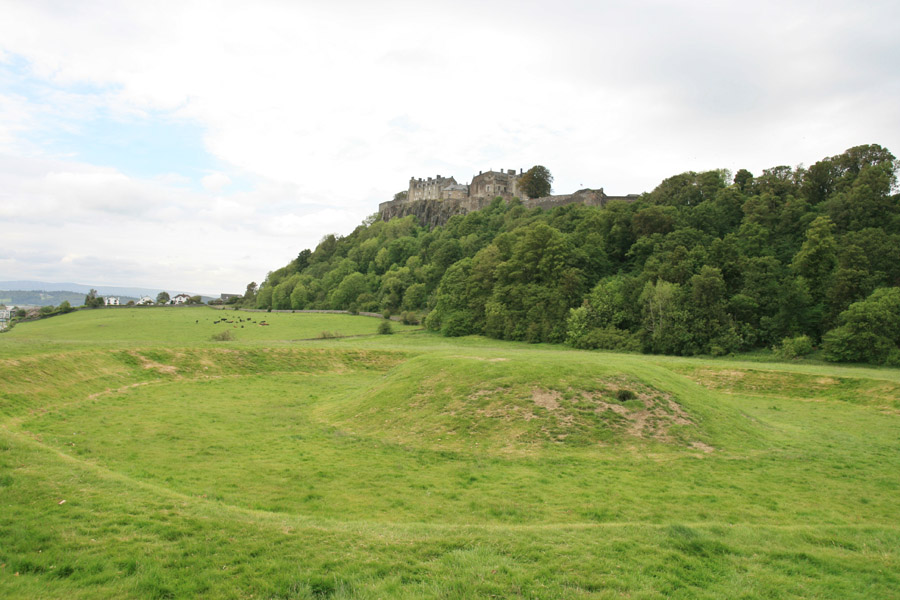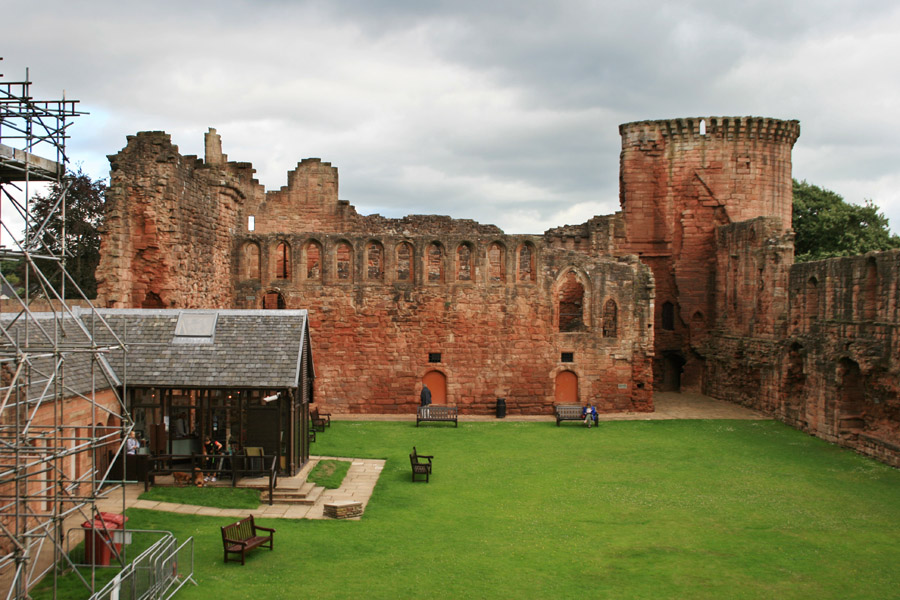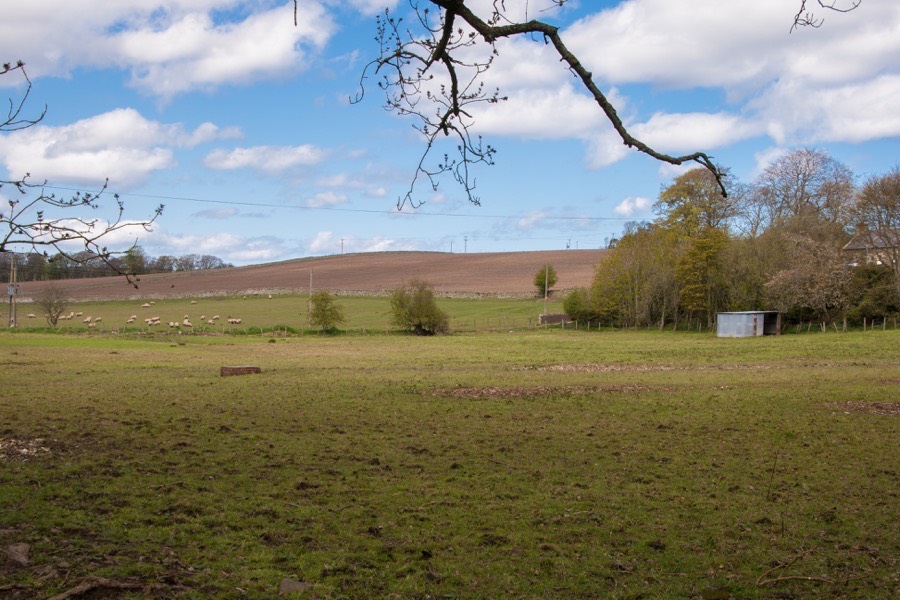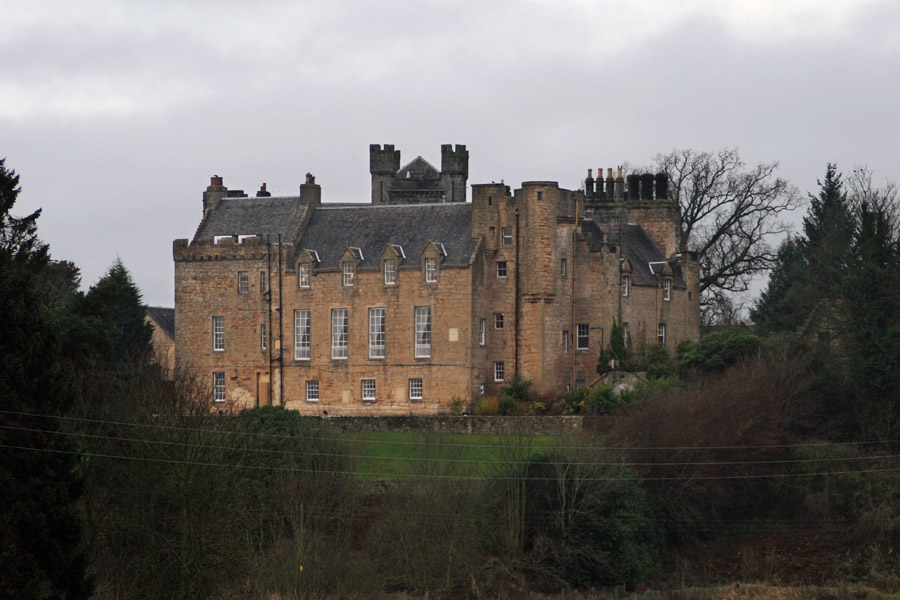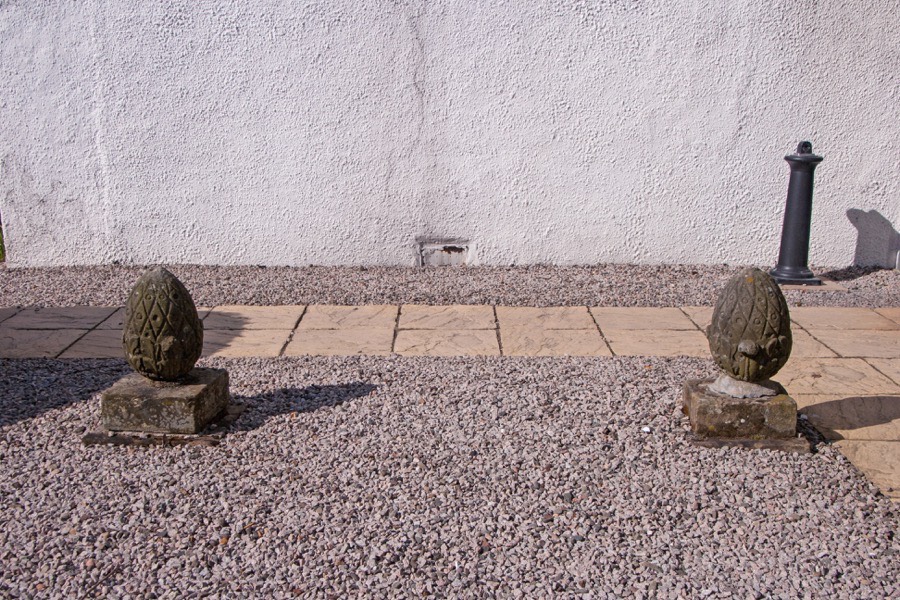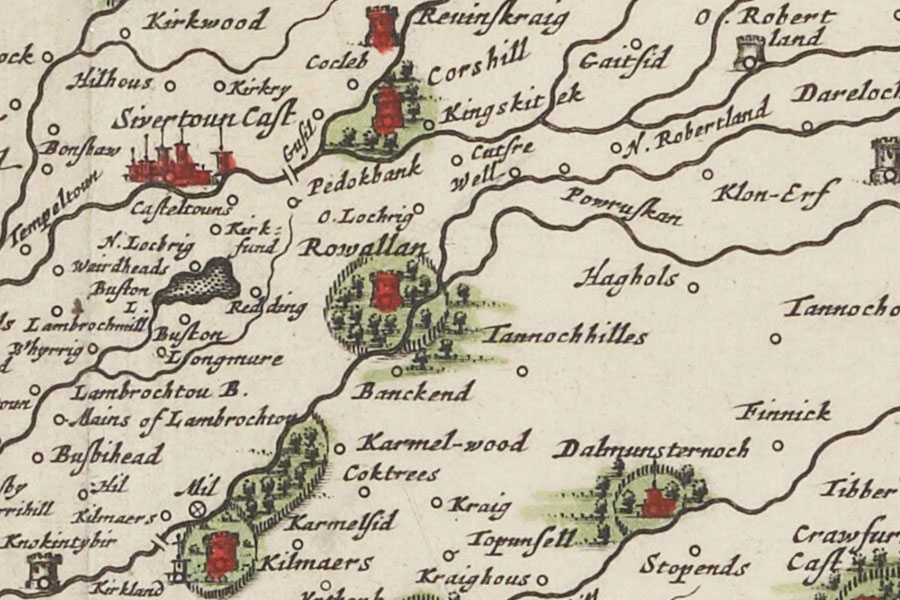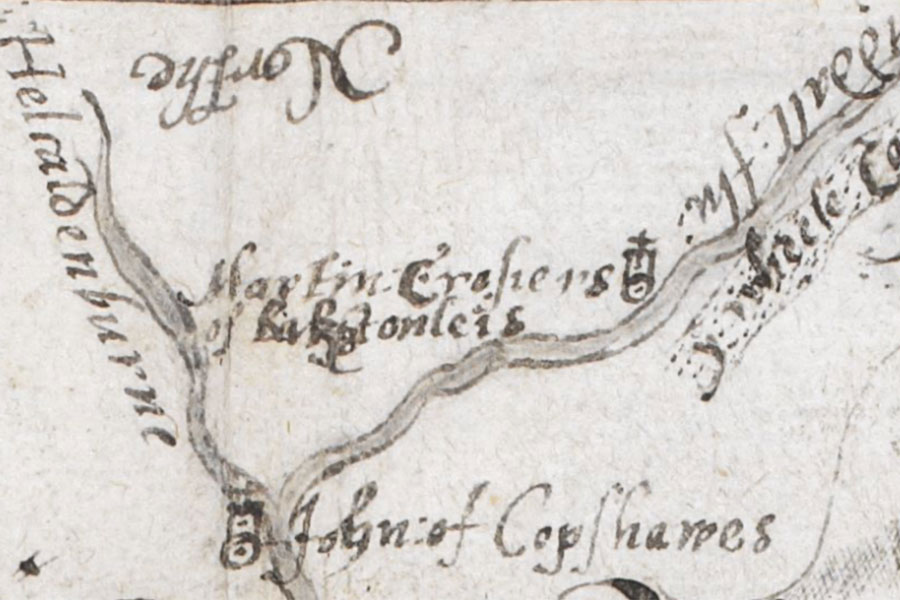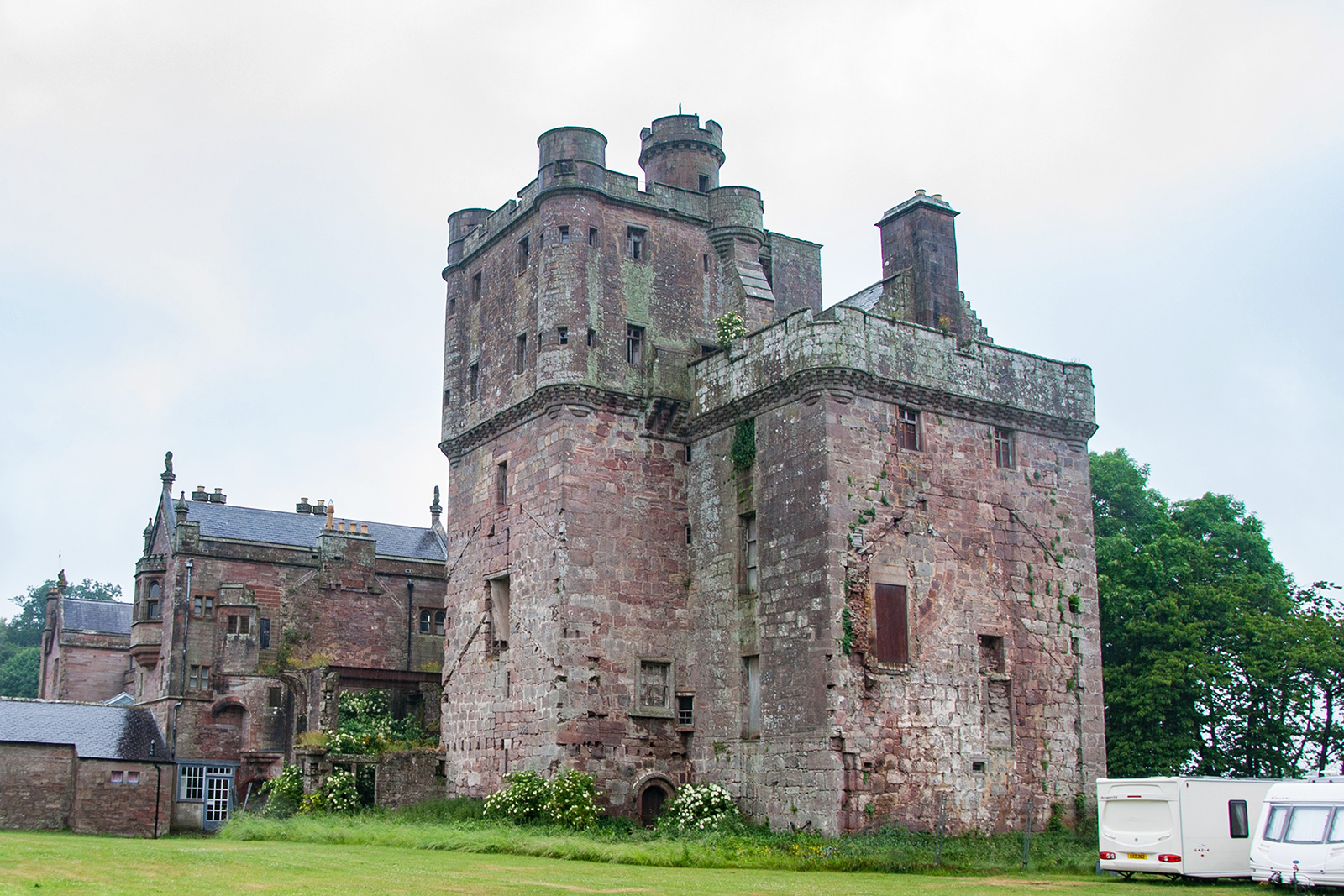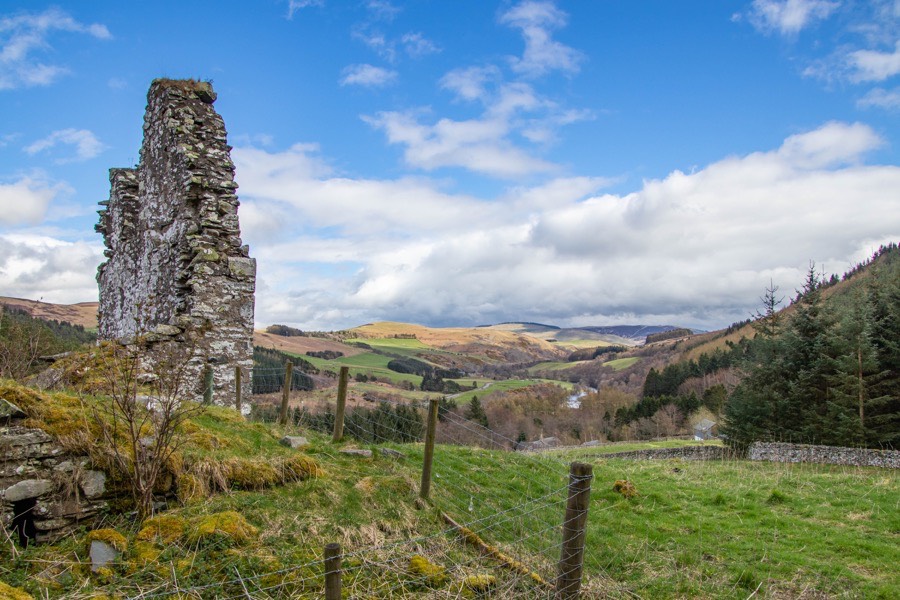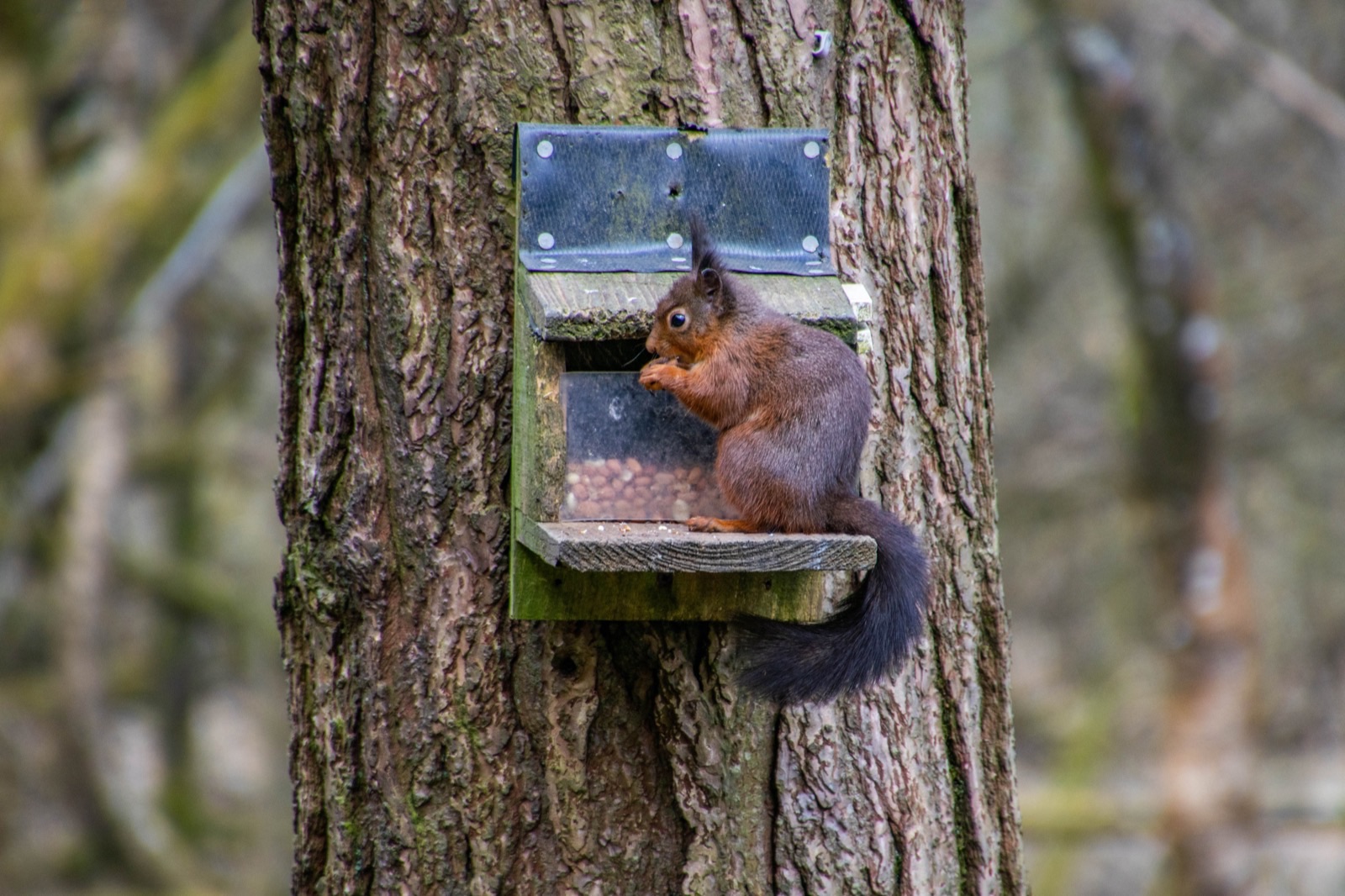A glossary of castle terminology
There are many specialist and obscure words used to describe castles and their constituent parts. Some words are medieval in origin, or even derived from French or Latin, while others, such as “moat” and “motte” for example, sound confusingly similar but mean something quite different.
To help you negotiate your way through castle descriptions we’ve put together a glossary of terms with explanations for each.
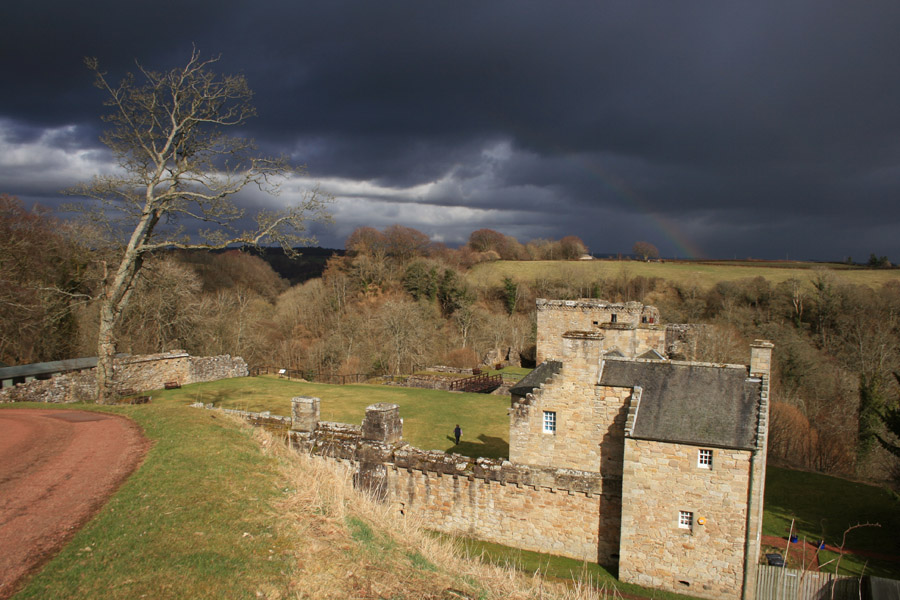
arrow loop – a narrow opening in a wall to allow defenders to fire arrows through. Typically either a vertical slit or cruciform in shape. See also “loophole”.
bailey – the area enclosed within a “courtyard” wall. See also “motte and bailey” and “ward”.
blockhouse – a dedicated artillery fortification usually consisting of an isolated fortified building.
bastle house or bastel house – a fortified farmhouse found throughout the Border country of Scotland and England. Typically they have thick walls with space on the ground floor for animals and living quarters above. The name is said to derive from the French word “bastille” meaning a “fortified building”.
courtyard castle – a style of castle in which all of the buildings are built against the inside of the courtyard wall.
donjon – the main central tower of a castle containing the principal apartments. They were strongly-built in order to be self-sufficient during a siege if the rest of the castle was captured. See also “keep”.
dry moat – a wide, deep defensive ditch surrounding a castle. See also “moat”.
enceinte – from an Old French meaning “to surround” this can mean either the wall around a castle or the space enclosed within it. It can also be used to describe a castle with no central keep.
gatehouse – a tower containing a fortified gate into the castle.
gatehouse keep – a castle where the main tower or keep also functions as a gatehouse.
gun loop – an opening in a wall to allow defenders to fire guns through. Originally similar in shape to “arrow loops” by the early 16th century they were typically small and round on the outside with horizontal splayed edges on the inside to allow a long gun to be angled. See also “loophole”.
hall house – a building containing the principal rooms of the castle which is typically low and rectangular rather than tall and square like a “keep”. See also “hall keep”.
hall keep – contains the principal rooms of the castle but is typically low and rectangular rather than tall and square like a “keep”. See also “hall house”.
keep – the main strong central tower of a castle. Containing the principal apartments, they were designed to be self-sufficient in the event of a siege where the rest of the castle was captured. See also “donjon”.
loophole – an opening in a wall to allow defenders to fire through. See also “arrow loop” and “gun loop”.
moat – a wide, deep defensive ditch surrounding a castle often, but not always, filled with water. See also “dry moat”.
motte – a raised earth mound on which a wood or stone tower would be built. See also “motte and bailey”.
motte and bailey – a style of castle consisting of a tower on a raised earth mound sitting within a wider courtyard wall. See also “motte”.
palisade – a strong fence constructed from wooden stakes driven into the ground vertically.
peel tower – a castle consisting of a large, isolated tower typically without any surrounding walls. Common throughout the Border country of Scotland and England. See also “tower house”.
ringwork – a castle surrounded by ditches and ramparts topped with a palisade or wall.
shell keep – a later wall built around the top of a “motte” to replace the original smaller tower and enclose the summit.
tower house – a large, free-standing tower typically without any surrounding walls. See also “peel tower/”.
ward – the area enclosed within a “courtyard” wall. See also “bailey”.
yett – an old Scots word for a hinged gate consisting of a grille of wrought iron latticework and typically used to protect the entrance to tower houses or the keeps of castles.

